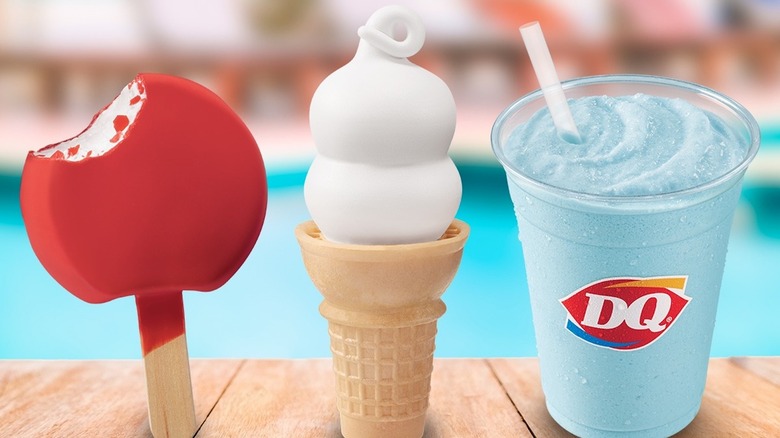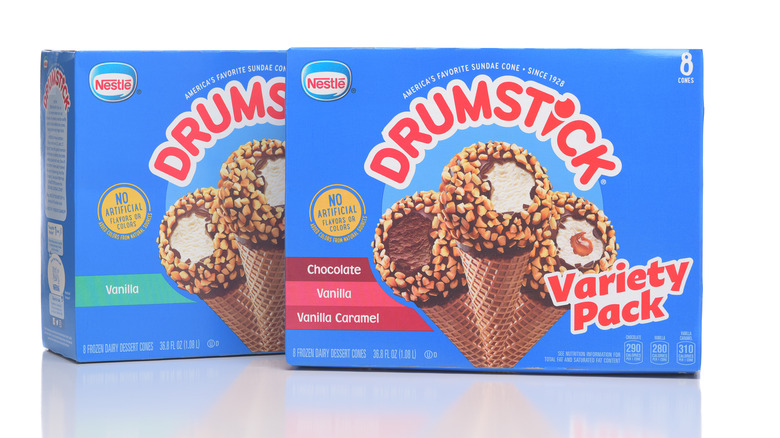Why Dairy Queen's Soft Serve Isn't Technically Ice Cream
A frozen treat from Dairy Queen is a guaranteed sweet tooth satisfier. From Blizzards to the curly Q-topped dipped cones and sundaes, Dairy Queen distinguishes itself with its signature selection of desserts. You'll see DQ describe these soft serve items in many ways — indulgent, smooth, flavorful, world-famous, etc. The only thing the fast food chain cannot truthfully describe it as, though, is ice cream.
While Dairy Queen holds its crown as one of the most popular ice cream chains, its soft serve is not technically ice cream at all. Consumers may refer to Dairy Queen's products as ice cream and find that they satisfy a craving all the same, but, per the guidelines of the Food and Drug Administration, Dairy Queen cannot legally call these products ice cream. Hence, you aren't likely to see the words side by side on the DQ menu or in any of its advertising.
DQ soft serve is missing a crucial component of ice cream
According to the FDA, a frozen treat must contain at least 10% butterfat (the fat that naturally occurs in milk) to don that ice cream label. Its high fat content helps it achieve that creamy texture as well as hold its shape when scooped into a cup or cone. As Dairy Queen discloses on its website, its soft serve contains only 5% butterfat. This lower butterfat makeup is to be expected for soft serve, Dairy Queen-brand or otherwise. Soft serve is a lighter, smoother alternative to ice cream; its lower fat and higher air contents help achieve that luscious consistency.
The butterfat component not only marks the difference between ice cream and soft serve but also the difference between ice cream and gelato – the Italian frozen treat's lower butterfat makeup allows for its stretchy texture, as opposed to the slightly firmer texture of ice cream.
There is more to ice cream than the technical label
Whether you notice it or not, brands evade the term ice cream on frozen dessert labels everywhere, not just at Dairy Queen. Many frozen treats lining grocery store shelves are made with similar dairy ingredients and hold the same scoop shape, but like soft serve, cannot be called ice cream because they lack that crucial butterfat content. But it's not a problem great branding can't solve.
Nestlé Drumsticks are a perfect example. Nestlé does not brand the popular product as soft serve instead of ice cream but rather as a "Sundae Cone." Instead of using butterfat to make the treat creamier, the manufacturer uses a mix of vegetable oils which help delay the cones from melting at room temperature. In a similar vein, many dairy-free ice cream alternatives are now on the market, but are carefully advertised as "non-dairy frozen desserts." Though ice cream comes with specificity, the likes of Dairy Queen soft serve, gelato, and the rest of the creamy frozen dessert category prove that the quality and joy derived from the product matters more than the precise terminology on its label.


